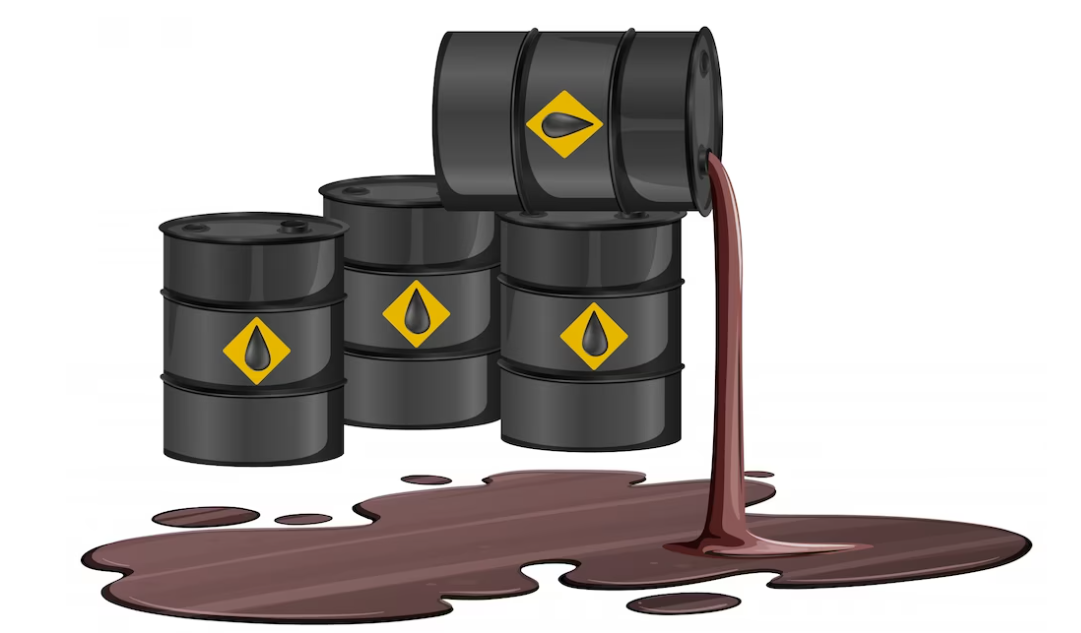Navigating the Volatile Seas of Crude Oil Prices

Crude oil market volatility is nothing new, and the past several months have been no different. Crude oil prices have been fluctuating like a roller coaster, leaving consumers and investors unsure of what may happen next. In this blog, we'll talk about the variables affecting crude oil prices and consider several supply and production scenarios. Here are the main ideas in further detail.
The Direction of Crude Oil Prices in the Upcoming Months
Brent crude prices have increased by about 25% since mid-June, continuing the current rising trend in crude oil prices. Everyone is quite concerned about whether this trend will continue. The solution is complicated and determined by a wide range of variables, as it usually is.
Optimistic Outlook
The price of oil has increased as a result of many causes. Supply has decreased as a result of major oil-producing nations' implementation of production cutbacks. Demand has also increased as a result of better macroeconomic conditions and declining inflation in significant oil-consuming countries like the US. With forecasts for future growth, global oil consumption has reached historic highs. These variables point to a promising short-term forecast for oil prices.
Negative Considerations
But it's important to proceed with care. High oil prices for an extended period of time might cause global inflation, impede the economic recovery, and decrease demand from big consumers. High oil costs also encourage a rapid switch to greener energy sources, especially in the transportation industry. Therefore, countries that rely significantly on oil earnings do not benefit from a rapid decline in demand for the commodity.

Factors Driving Up Crude Oil Prices
It is essential to comprehend the factors driving up oil prices in order to forecast their future fluctuations. The main forces are as follows:
• Production Cutbacks:
To reduce supply and raise prices, major oil-producing countries, notably those in OPEC and OPEC+, have imposed production cutbacks. These price reductions have been a major factor in the current price increase.
• Global Economic Circumstances:
Rising oil consumption is a result of better macroeconomic circumstances, notably in the US. This increase in demand is partly a result of lower inflation in key consumer nations.
• Record High Demand:
Demand for oil is at an all-time high, and there are forecasts that it will continue to rise. As economies recover from the pandemic, industries and consumers alike are driving up demand.
• Transition to Cleaner Fuels:
High oil prices are accelerating the shift towards cleaner energy sources, particularly in the mobility sector. This transition could impact long-term demand for crude oil.
Scenarios of Reduced Supply and Production
The stability of crude oil prices can be disrupted by changes in supply and production. Here are some potential scenarios:
• Disagreements Within OPEC and OPEC+:
In the past, there have been public disagreements among oil-producing nations over extending production cuts. Such disagreements can lead to uncertainty in the market and impact prices.
• Efforts to Bring Back Sanctioned Suppliers:
Speculation exists that major oil consumers may intensify efforts to bring oil from sanctioned suppliers like Iran and Venezuela back into the market. Talks between the US and Iran, as well as Venezuela's negotiations with China, suggest the possibility of increased supply.
• Impact on Import-Dependent Economies:
When oil prices increase, countries that rely significantly on imports, like India, experience difficulties. High oil prices have a detrimental impact on currency values, foreign exchange reserves, and trade balances, which can cause inflationary pressures and threaten profitability in important industries.
• Fuel Pricing Complications:
Increased crude oil prices might postpone the transition of transportation fuels like gasoline and diesel to market-linked pricing. Oil marketing firms in the public sector could be reluctant to lower fuel prices due to the possibility of losses or the need for government assistance.
Conclusion
With both favorable and unfavorable forces at play, the direction of crude oil prices in the upcoming months remains unpredictable. Prices have increased due to production cuts and increasing demand, but there may be instability in the market due to probable conflicts among oil-producing countries and efforts to reintroduce sanctioned suppliers.
The effects of increased oil costs on consumers go beyond the gas pump and have an influence on trade balances, foreign exchange reserves, and inflation rates, particularly for people living in import-dependent nations. The future of crude oil prices and global efforts to cut carbon emissions are becoming more and more interwoven as the globe continues its move to renewable energy sources.
For people, corporations, and governments alike, remaining updated about the factors influencing the oil market is crucial in this constantly shifting environment. In order to comprehend and get ready for prospective changes in the crude oil market, it will be essential to keep an eye on geopolitical events and the decisions made by key oil-producing nations.